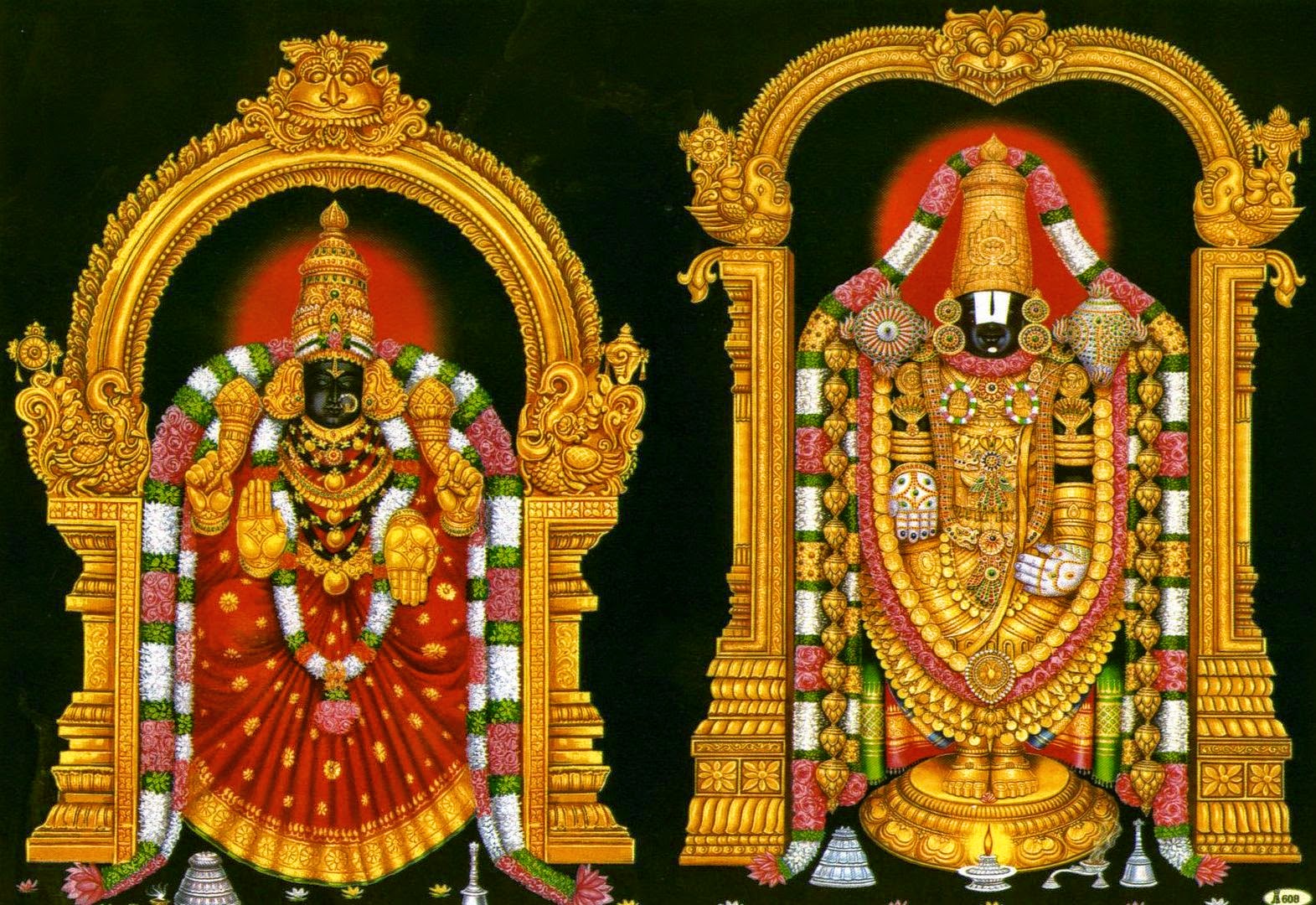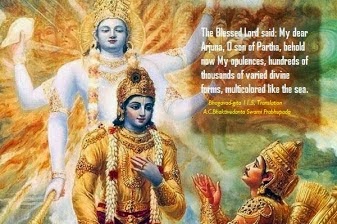Srimad Bhagavadgeeta : Ch-12. Slo-2.
Saturday, August 02, 2014.
Srimad Bhagavadgeeta :
Chapter-12. ( Bhakti-yogam )
Slokam-2. : The devotee who does Upasana ( Prayer/ meditate..so on ) to Paramatma in the "Saakaara bhaavam" ( VIGRAHA-ARADHANA/ IMAGE OR SOME SORT OF OBJECT WORSHIP), What are the gunas ( qualities ) required to such person? - this is told in this slokam.
................................................................
Introduction :- The first slokam of this chapter starts with Arjuna's doubts about Bhakti-yogam. The seekers are two types. 1. one who worship through vigrah-aradhana ( saakaara-bhaavam)( image or statue or object worship ). and 2. worship without the supports of objects ( niraakaara-bhavam). Both groups are yogies,-if so , who among the two is more "Sreshtan" ( Superior).
Arjuna's question is - Is it possible to attain Paramatma through image worship, an image with its limitations how becomes the symbol of Paramatma? How can a wave represent the Ocean?
Here the slokam two begins with answer to the above question...
................................................................
Mayyaavesya mano ye mam nityayukta upasate,
Sraddhaya parayopetah te me yuktatama matah.
................................................................
Manah mayi aavesya = Mind enters the Paramatma and,
Paraya sraddhaya upetah = With supreme concentration and attention,
Ye mam upasate = One who does upasana,
Te yuktatamah = He is the superior yogi,
Me matah = This is my opinion.
................................................................
Bhagavan Krishna here announces the essential three gunas ( qualities ), required by the Bhaktas ( devotees/ seekers ), who follow Sadhana. Generally there is a belief that Bhakti-margham is simple and easy way to attain Paramatma. According to individual's interest and eligibility, each seeker selects the margham ( way/path ) for Bhakti Sadhana.This helps seeker in his journey to Paramatma.
For example : According to the difference in the vehicles used, the route will change, along the road you cannot travel by boat, likewise travel by car in the waters, not possible, a cyclist cannot pedal in 60kilometer speed, where as car can.
Hence A seeker should know what margham is suitable for him, he can follow either Bhakti margham, or karma-margham, or Jnana-margham, according to his convenience.
1. "Mayyavesya manah" ( Connect your mind with me ) : - Our subtle body ( mind, intelligence, ego ) is full of cinthas ( thoughts ). Mind and intelligence are nothing but thoughts only. It is not enough, that Eswara-cinthanam ( God-minded practiced as a time-pass. The arrow ( mind ), should hit the target ( Eswaran / God ), like the arrow pierce the target and pass through, mind must dissolve after connecting the Supreme. The word 'Avesya' means it is not enough a simple touch, but hit and pierce. Whatever we think, its dharmam, rupam, and bhaavam, gunas are acquired by our mind. During meditation, when the intensity of the meditation increases meditator will be dissolved in the object ( Paramatma )of the meditation. It is felt by the meditator, when he fully involves his mind ( silences his mind ), he feels that his individuality is surrendered to the Lord.
2. Nityayukta upasate ( ever remain alert in upasana ):- This is the second quality of a person who follows the Bhakti-margham. During meditation seeker should concentrate his mind in meditation, no thoughts should disturb the mind, the attention should be in the target only. This process is called 'yogam', one who is capable for yogam is known as 'Yuktan'. Ability to take the mind towards the Paramatma, without any struggle, such meditators are 'Nityayukta'.
When we hear the word 'upasana'Pujas, Archanas, like rituals come to our memory. But upasana is not a body concerned activity, it is not a physical activity, it is concerned with mind only, that is, taking our inner self to Supreme Paramatma and connect,then dissolve in Paramatma.( UPA = NEAR, ASANAM = SIT ( FIX/CONNECT )- ALLOW THE MIND TO TAKE ITS STATUS NEAR PARAMATMA. Because of this practice when mind is silenced, Jeevatma ( the inner chaithanyam/power ) unite and dissolve in Paramatma, the Supreme truth.
3. Sraddhayo parayopetah :- Usually we mean faith for the word 'Sraddha'. But it is not an ordinary faith. For example :- Today some one who have experience in a thing, tells me about it ( on that I have on idea or experience), I believe it as truth, thereafter I examine whether it is truth or not by using discrimination, once it is proved true and the my faith on that truth is called "Sraddha". What Science and teacher tell about things, the ability to find the truth in that, is called "Sraddha". Only those who have this ability only succeed in the bliss, the others who have no sraddha meet failure in their attempt in meditation.
Finally summing up - The three important qualities necessary for a Bhaktan ( seeker/devotee ) are mentioned in this slokam, they are - 1. Sraddha, 2. Ekagrta (Concentration), 3. Tanmayata ( Union/ connection). The devotee who have all these three qualities, Lord Sri Krishna declares, that this Bhaktan is the valuable "YOGI".




Comments